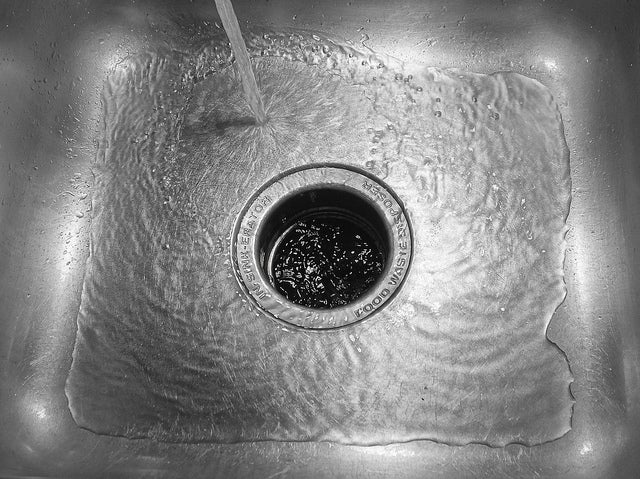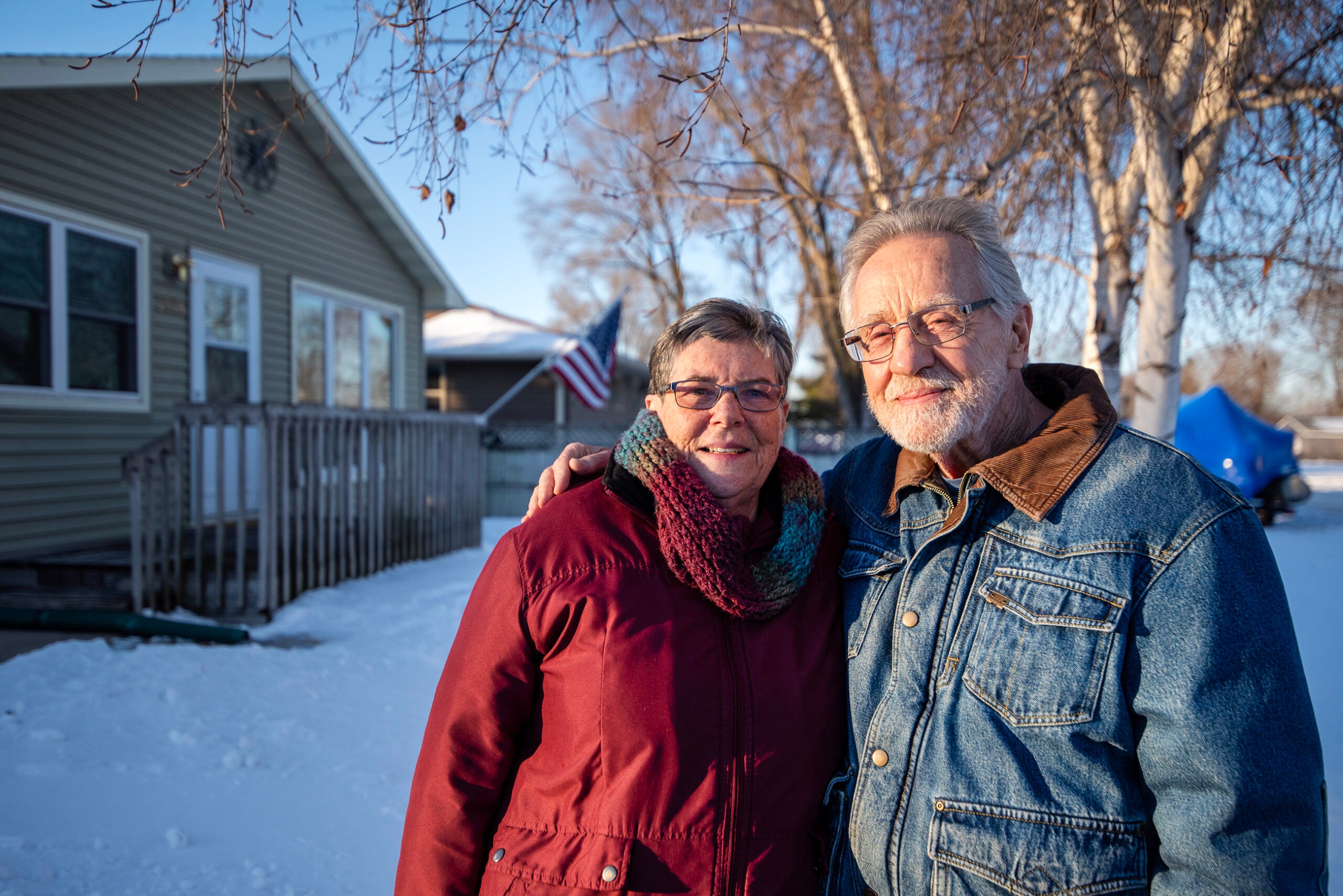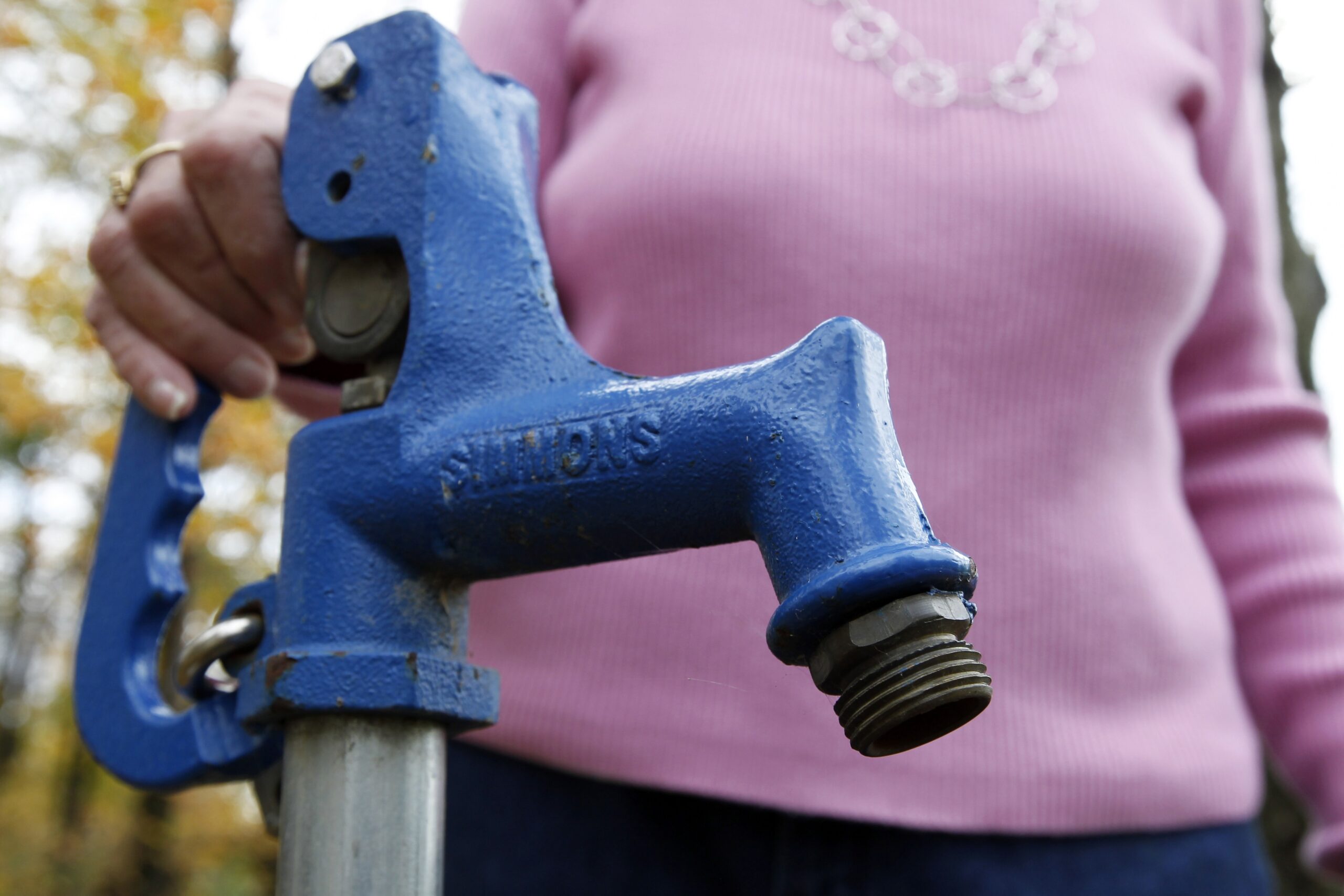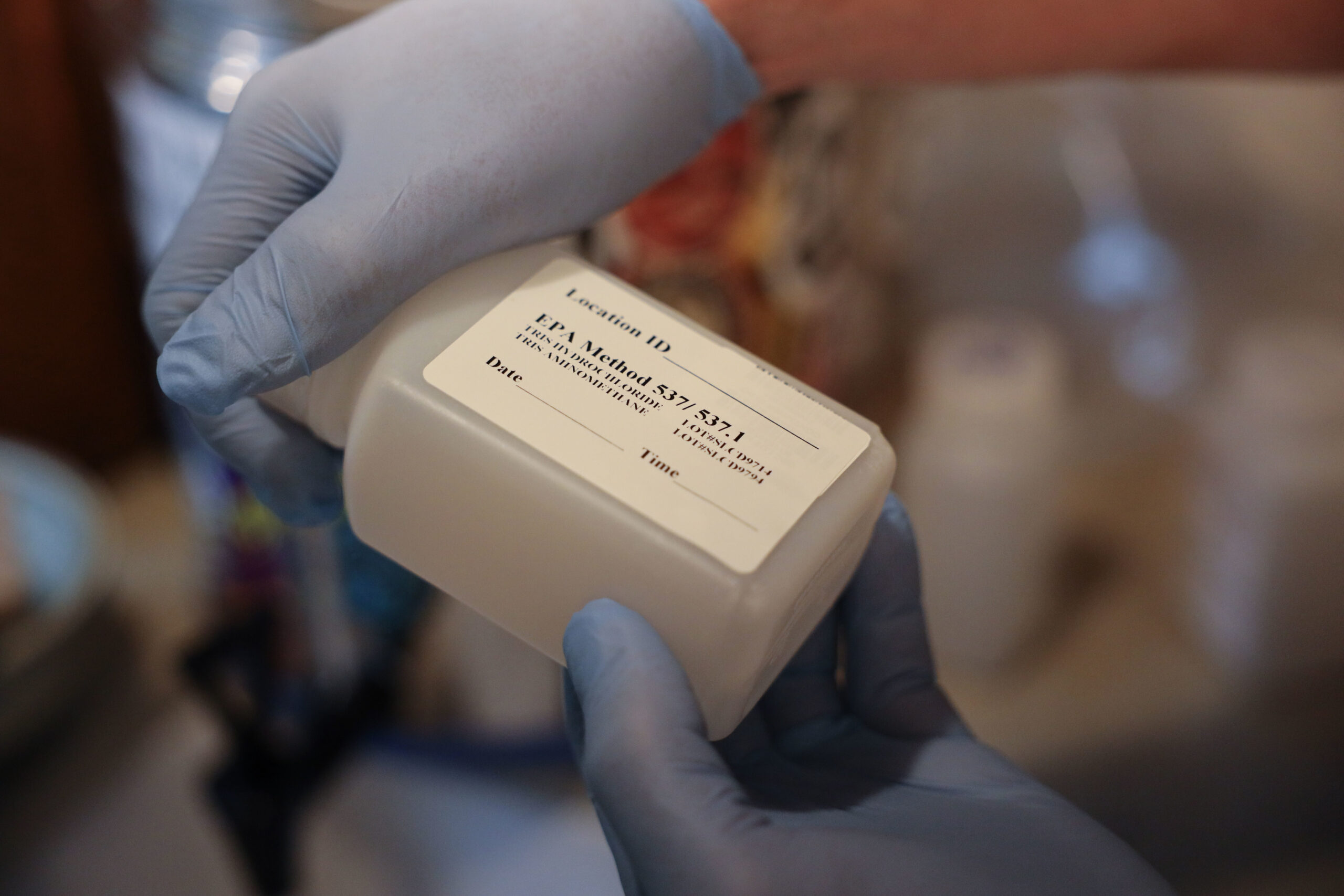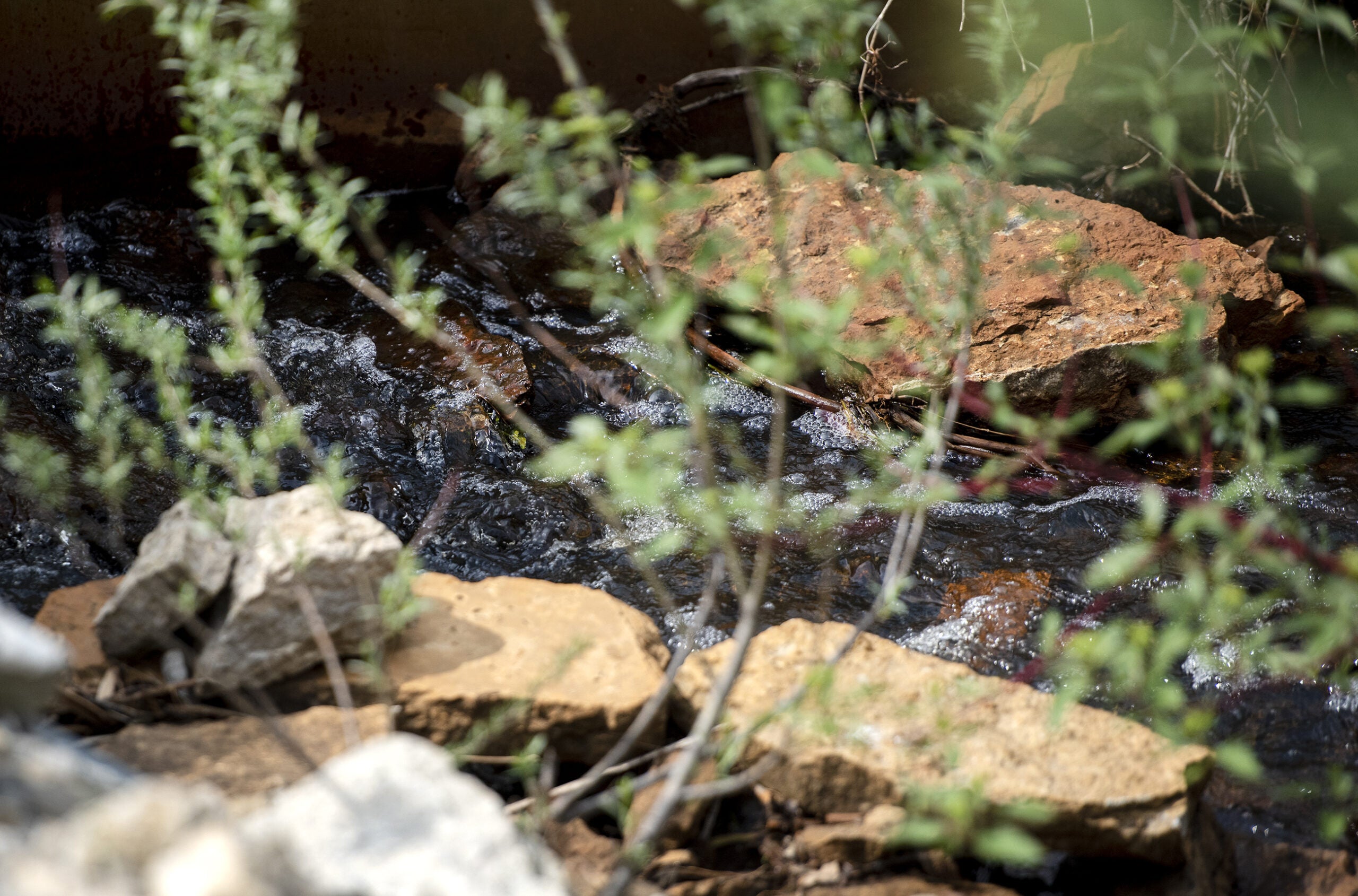Researchers have completed the first phase of a groundwater study in Wisconsin’s Grant, Iowa and Lafayette counties.
The Southwest Wisconsin Groundwater and Geology Study‘s Phase 1 included two rounds of private well testing. The first round tested samples from 301 private wells in November 2018. The survey found 42 percent of the wells exceeded standards for bacteria or nitrates, a compound linked to a variety of health problems.
The second testing group was taken in April and included 539 randomly-selected wells. Twenty-seven percent exceeded bacteria or nitrates standards, with significantly fewer wells testing positive for total coliform bacteria.
Stay informed on the latest news
Sign up for WPR’s email newsletter.
Ken Bradbury, state geologist and a principal investigator on the study, said this finding isn’t a shock.
“That’s not too surprising given that we often see lower coliform over the winter,” said Bradbury. “There’s less land spreading and there’s slower or less groundwater recharge because the ground is frozen.”
Both testing groups had similar percentages of wells test positive for E. coli bacteria and exceed nitrate standards.
Lynda Schweikert, administrator of the Grant County Conservation, Sanitation, and Zoning Department, said the two testing groups involve different wells and can’t be directly compared.
“(The April testing) should be looked at more as ‘in addition to’ the sampling that we took in the fall,” Schweikert said. “That was the purpose of the baseline, to get an idea in the area of where contamination is occurring.”
Bradbury said the study is the largest sampling of private wells in the area that has been done in a scientifically-controlled way, with all samples taken at the same time, in the same way and analyzed at the same lab.
He said previous well testing had shown potential contamination issues, but sampling had been done at random without controls for time of year or testing method.
“It was hard to draw any conclusions and frankly, there was some doubt about how valid those (results) were,” Bradbury said. “The hydrogeologists were not too surprised by what we found (in latest surveys) but to draw conclusions you really need to make sure everything is being done correctly.”
Previous test results from the SWIGG study have shaken the public and lawmakers, with Assembly Speaker Robin Vos creating a water quality task force and Gov. Tony Evers declaring 2019 the “Year of Clean Drinking Water.”
Schweikert said the publicity has helped raise awareness about the SWIGG study and the need for more research into water quality of private wells.
“Groundwater hasn’t gotten the attention that surface water has in the past,” Schweikert said. “You need the participation of private landowners to get access to the groundwater. So with the increased attention, I think we’re getting increased participation from landowners, as well as the legislature who are looking at maybe new or improved programs down the line.”
Bradbury said the next phase of the SWIGG study will analyze the source of contamination through a process called microbial source tracking.
“One of the questions that we often get is ‘are bacteria in the wells related to people, that is primarily from septic waste from onsite septic systems, or is it related to agriculture or animal waste from cows and pigs and so forth?’ Bacteriologically, those types of bacteria can be distinguished in the lab,” Bradbury said.
He said the study will also look at geologic factors that could be causing some wells to be more susceptible to contamination, like the depth to bedrock or the type of well construction.
“Generally, the more soil you have, the more natural filtration of contaminants there will be,” Bradbury said. “Likewise, wells that are cased more deeply are less vulnerable than shallow wells. So now that we have a good database of water quality information, we want to start comparing that to some of the geologic data to see if we can see correlations there.”
The SWIGG study’s progress is being applauded by some environmental groups.
Scott Laeser, water program director for Clean Wisconsin, said the results of Phase 1 aren’t surprising.
“We knew there was some preliminary data indicating a risk of contamination in southwest Wisconsin and this study has sort of largely demonstrated that,” Laeser said. “There’s a lot of great work that’s still going to be done on this study in the coming months. But we know enough right now to say pretty definitively that we have some well water issues.”
He said one of the SWIGG study’s biggest accomplishments has been inspiring buy-in from lawmakers. But he said new funding for water conservation programs in the governor’s budget proposal likely won’t make it through the Republican-led Legislature.
“We owe it to the people who can’t drink their water right now to start coming up with some solutions because it’s going to take awhile to really address the root of the contamination and to clean up the water,” Laeser said.
Wisconsin Public Radio, © Copyright 2025, Board of Regents of the University of Wisconsin System and Wisconsin Educational Communications Board.
